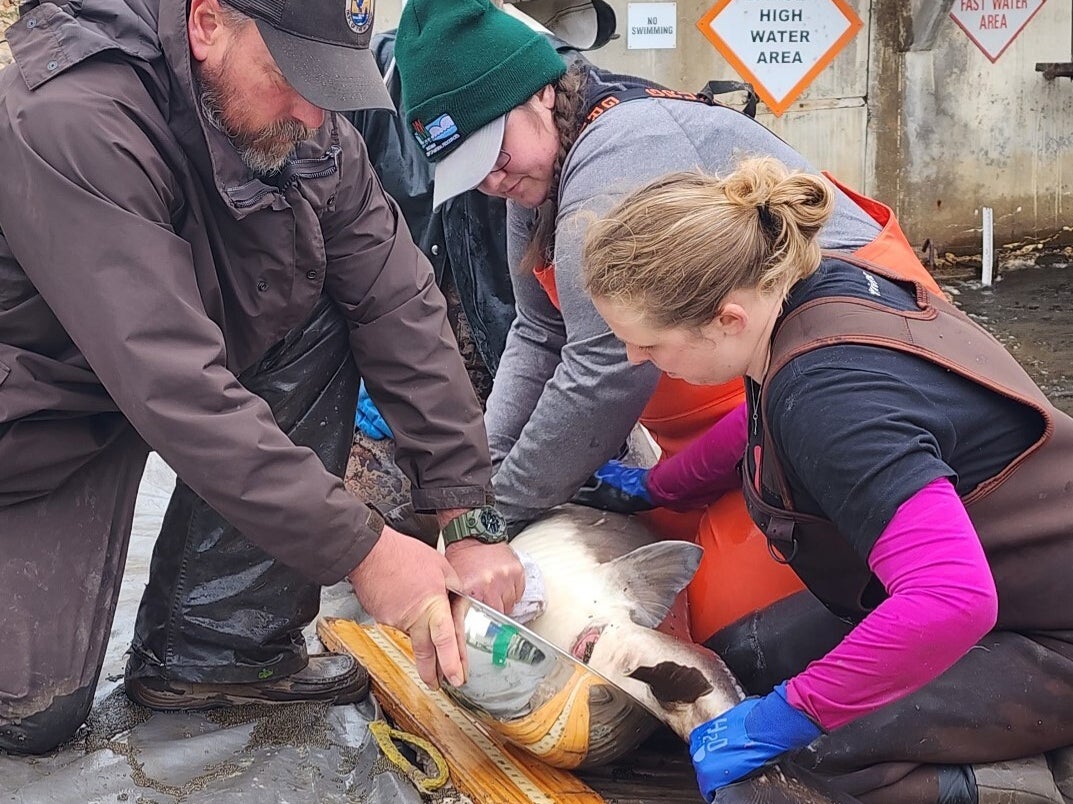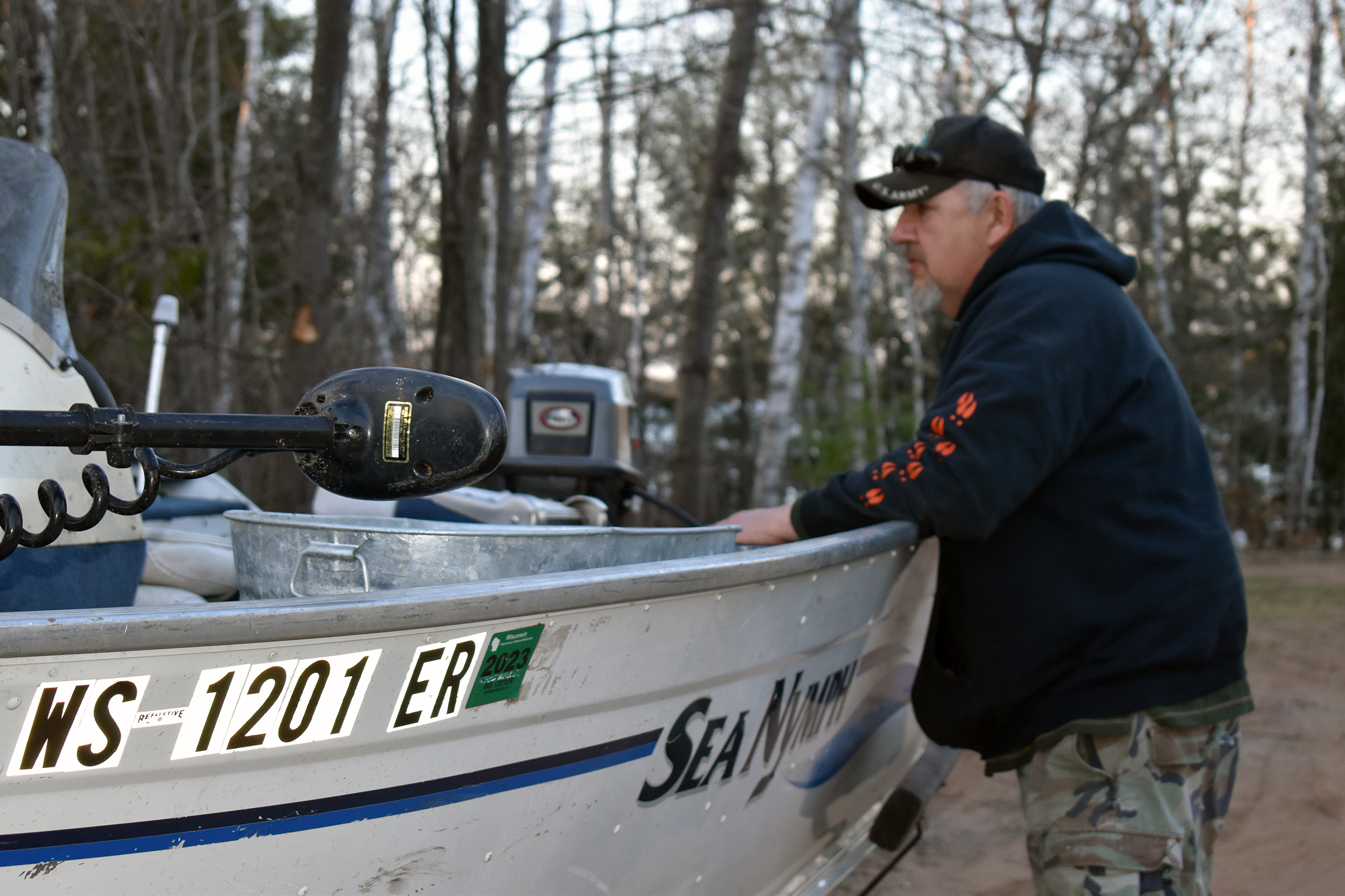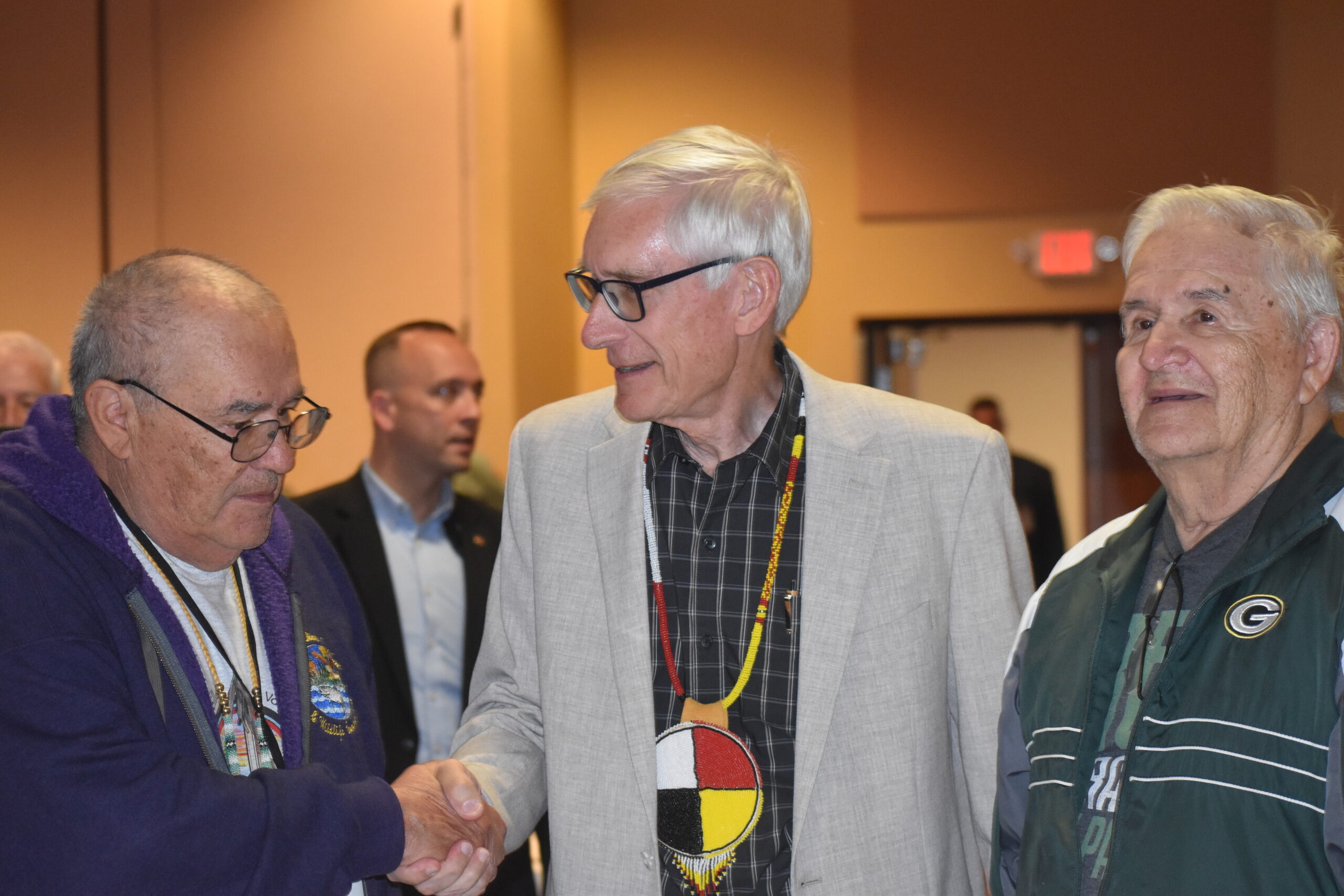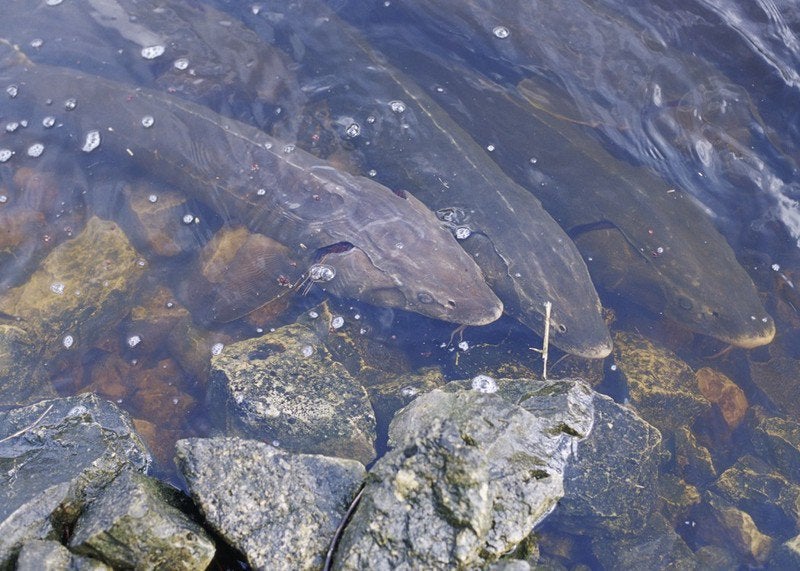Veronica Rueckert and Rob Ferrett look at ways women can combat gender bias at work, talk to the head of a new project on mine site reclamation in Wisconsin, and learn about the state’s sturgeon spearing culture.
Featured in this Show
-
Sturgeon Spearing: A Wisconsin Tradition Returns
People from around Wisconsin and beyond will head out onto Lake Winnebago with spears in hand on Saturday. The end goal: Coming home with a fish that looks as ancient as it does impressive.
Sturgeon spearing is a Wisconsin tradition that dates back hundreds of years. It was pioneered by the state’s Native Americans and adopted by early European settlers to Wisconsin, according Kathy Kline, author of “People of the Sturgeon: Wisconsin’s Love Affair with an Ancient Fish.”
The sturgeon itself is somewhat of an anomaly among fish in that it can live over 100 years, grow to over 200 pounds, and have an almost prehistoric appearance.
“They’re not a modern fish,” said Kline. “They’ve been around over 150 million years.”
In the lead-up to Saturday’s season opener, sturgeon spearers are already making their preparations. According to Kline, shanties are being put up on the ice, and holes are being drilled.
While the process sounds similar to ice fishing, there are a few important differences. Due to the size of a sturgeon, a larger hole must be cut in the ice. Size regulations are in place, but Kline said a normal hole is about the size of a door, and cutting it can be quite an experience.
“This year, especially, it’s going to be a lot of work to cut in a sturgeon spearing hole, because the ice is several feet thick,” she said. “A chainsaw is usually used with an extra-long attachment on it.”
The shanties are different, too, in that they require complete darkness inside.
“When you go into a spearing shanty, the only light that you’re going to see is coming from the sturgeon spearing hole,” Kline said. “It’s light that’s filtered through the ice and coming up from the water.”
Once the season starts, spearers will deploy decoys into the water to attract the sturgeons, which usually lurk at the bottom of the lake.
“If you can get their attention, they’ll come up and check out your decoy, and then it’s much easier to spear them,” said Kline.
From there, it’s a matter of spearing skill, and a whole lot of luck.
The season lasts for 16 days and Lake Winnebago is expected to see a huge amount of spearers. Officials with the Wisconsin Department of Natural Resources reported selling over 11,000 sturgeon spearing licenses, which is down from the previous year but still ranks as fourth-most of all time.
And yes, the sturgeon are edible — and, according to Kline, delicious. For those lucky enough to catch one, chances are they’ll have plenty of meals for days to come.
-
What Works For Women At Work
Recent surveys show the majority of women in the workplace feel the effects of gender bias. But what should they do about it? Two experts give solutions to four patterns of discrimination.
-
New Mine Site Reclamation Study Conducted In Wisconsin
The head of a new project on mine site reclamation to be conducted in Wisconsin explains how the project will work and why it’s needed here in the Badger State.
-
Curious Wisconsin: Sturgeon Spearing
On Saturday the sturgeon spearing season on Lake Winnebago opens in Wisconsin. But how did this become a tradition in the Badger State? An expert explains the history of sturgeon spearing in Wisconsin.
Episode Credits
- Rob Ferrett Host
- Veronica Rueckert Host
- Chris Malina Producer
- Amanda Magnus Producer
- Kathy Kline Guest
- Joan Williams Guest
- Rachel Dempsey Guest
- Holly Dolliver Guest
Wisconsin Public Radio, © Copyright 2024, Board of Regents of the University of Wisconsin System and Wisconsin Educational Communications Board.




